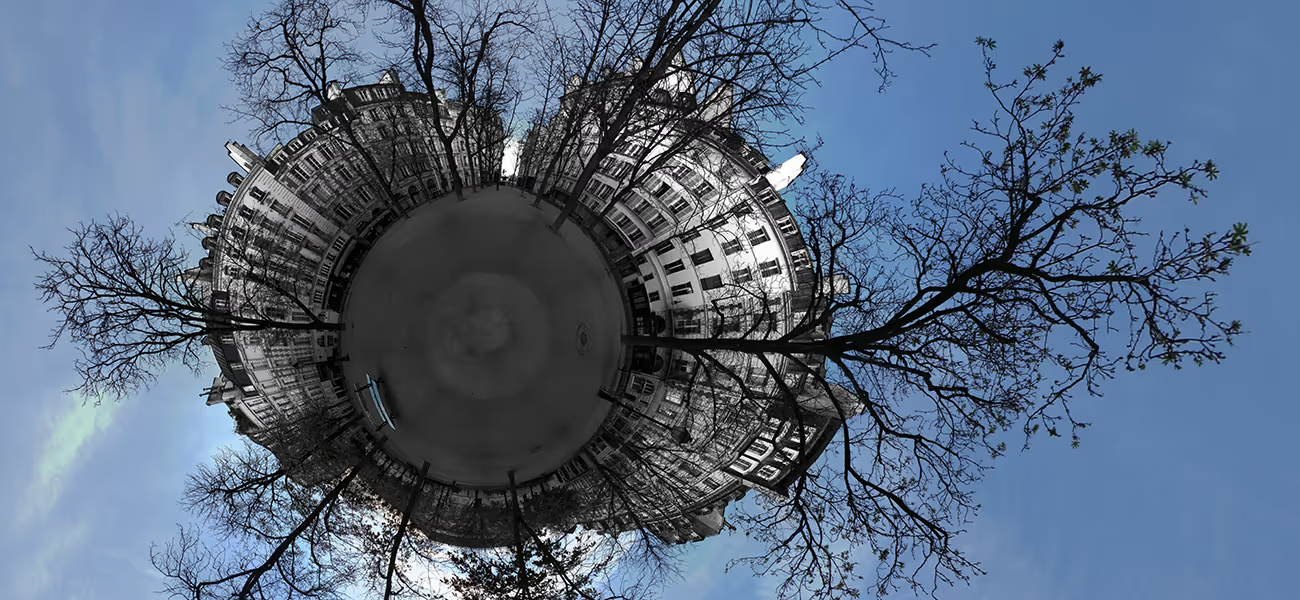Take a moment and imagine this scene:You are standing on the sidewalk of a quiet street, looking up at the blue sky on a bright sunny day. It is late spring and birds are chirping around you. Flowers from your garden are in full bloom. The morning dew has evaporated from the leaves of neighboring fruit trees, no longer glistening from the verdant blades of tall grass in the meadow at the end of the street. It is heating up and the afternoon is nearly upon you.Oh, and it’s the year 2050.Assume that the Earth has continued spinning on its axis, day after day, year after year. It has kept making its yearly journey around the Sun on the same invisible arc it has traced throughout the eons. The Earth hasn’t been consumed in fire or blown to smithereens. What has become of the human race? How did we manage all those crises earlier in the century? Did we avert climate disaster? Were we able to make the transition to a sustainable ecological model for our planetary market systems? Did we survive and thrive? Or flounder and collapse?This little thought experiment is no academic exercise. We are living through the middle of the ecological crisis right now. As I type these words. In this very moment. The threats and opportunities are very real. The collective outcomes of our actions today, tomorrow, and in the next few decades are poised to determine our fate. I want to suggest in this article that the only way humanity transitions to a state of planetary thriving is through intentional design of culture.My case is simple:
- There is a convergence of crises in the world today — as we push beyond planetary boundaries, placing all future generations at risk.
- The timeframe to achieve transformative change is short. We have to transition our energy systems, food production, urban design, and more — all in the next 10 to 20 years.
- For all our progress in the last few decades, we simply aren’t getting there fast enough with the current mix of approaches.
Every part of this is about the design of culture. It is now well documented that cultural systems operate according to the principles of evolution. Societies are complex systems with many interacting parts, ever changing and always adapting to new environments. What is not well documented — yet — is the basic truth that all of the pieces are available right now to integrate what we know about cultural change into a rigorous and comprehensive design science.Culture design is the application of design principles to systematically evolve a social system. It’s a means of changing social behavior through collaborative efforts among individual people, across organizations, and sectors of society.Desired outcomes include lower crime rates, greater levels of creativity and innovation, reductions in conflict that lead to greater cooperation through peaceful means, equality and justice for all regardless of race or creed, and economic stability that supports widespread prosperity.In prior generations, culture design might have gone by labels like social engineering or public policy. The reason I chose the new name is that it frames the focus on design thinking that promotes a directional change in cultural features that align with desired outcomes. This makes explicit that culture design builds on and incorporates all manner of design practices that have come before.The task I have undertaken as my mission in life is to meld these separate domains into a coherent and fully synthesized design practice. For more than two decades, I have worked across disciplines seeking patterns of convergence that paint a picture of the cogent whole. Among the sciences that contribute to culture design: anthropology, the social sciences, complexity research, linguistics, cognitive science and behavioral studies, computing, ecosystem modeling, earth systems, network analysis. Domains of professional practice include marketing, public policy, economics, business management, organizational behavior, user experience design, education, and more.The synthesis of these different fields is now possible. We can truly engage in the intentional design of cultural evolution. I have seen it done. Historic examples include the rise of consumer culture in the mid twentieth-century with the advent of public relations and marketing. The strategic growth of “innovation clusters” in regional economies. Peaceful integration of tribal groups into regional and global markets through economic interdependence. All of this has been demonstrated in one place or another at massive scales.Similarly, in the smaller and more localized contexts, we have figured out enough about early childhood development to design effective pedagogies — promoting emotional, social, and intellectual growth in the classroom. We have grown community gardens, launched businesses for the sharing economy, healed traumas with therapeutic practices for those scarred by disaster, and much more.What hasn’t been done is to map the idea landscape of culture design, organize it into a coherent set of practices, and deploy it into the self-organizing pathways of cultural evolution that are at play right now in the world around us. That is the task we must now undertake if we are to make the transition to sustainability. I have started this project, with seeds planted on my website, Change Strategist for Humanity. As the new editor for the culture section here on This View of Life, my goal is to engage researchers and practitioners on the forefront of culture design.In the weeks and months ahead, I will conduct interviews, share new research findings, explore the tools and techniques in current use, and host dialogue about the many intricacies and unresolved learning opportunities of this burgeoning new space. It will be a pleasure to delve into the issues with all of you. We have much to learn together and time is short.Sincerely yours,Joe BrewerEditor, TVOL



